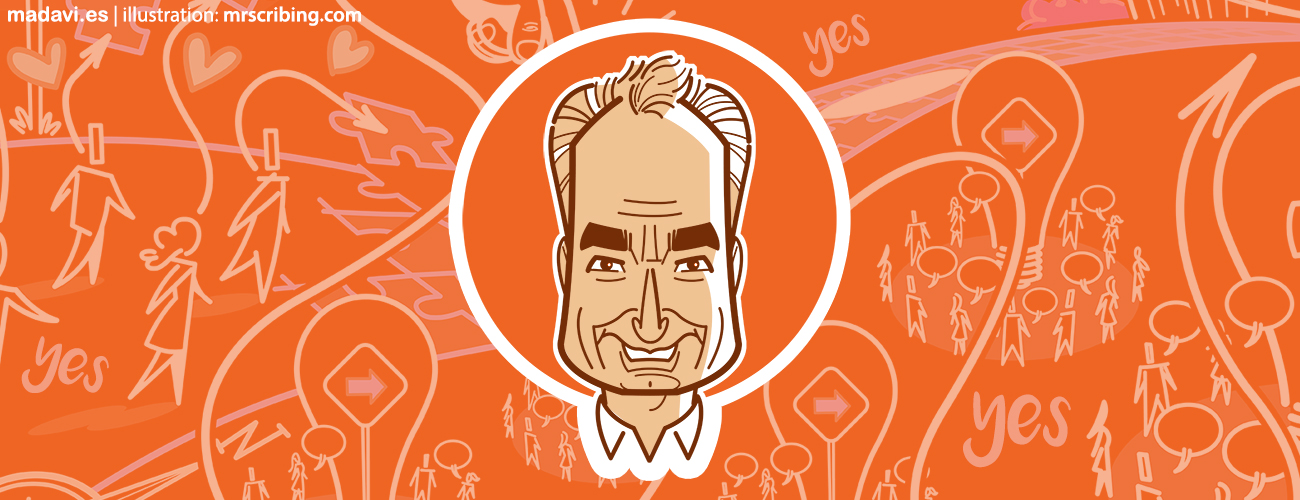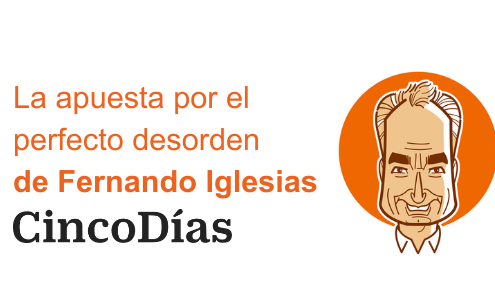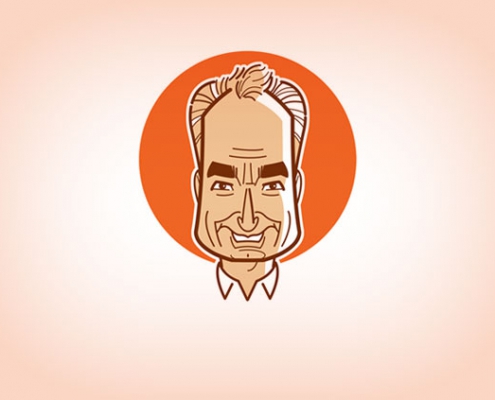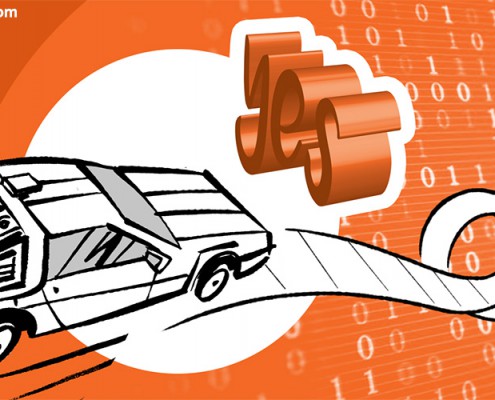“What is the point of putting focus on what we DO NOT have?”

Fernando Iglesias, founder of Madavi, has recently done an interview for Capital Humano on appreciative inquiry, addressing the cultural changes that are necessary to implement this system into the heart of companies. “What is the point of putting focus on what we DO NOT have when we have so much,” he points out.
– What tools does inquiry use and in what practices has it been transferred into the company?
Appreciative inquiry is a methodology, a set of principles, a philosophy and a way of seeing what is around you.
You start with the first two, and when you experience it in large groups, you want to apply that philosophy to all aspects, at work and in your life.
I shall start with an example from life. Parents go from asking why you have failed in a subject to making an appreciative evaluation of their childrens’ grades. They analyse the best results so that the child learns to succeed using their strengths. This learning is used for the areas with the greatest potential for change and to help design their path.
Here is an example from work. After the presentations, people stop using phrases such as “Mr. YES BUT” and whose surname is “I ALREADY SAID IT”. An appreciative practice is to share first what you liked most, what was useful, what you have learned in order to make explicit what is abundant. We start with what is a YES, we can talk about how to make the proposal even better and the unwanted side effects later on and finally we shall decide if it is as good for the whole as to invest in it. As my partner Miguel A. Sanz says, “Abundance helps us talk.”
– Can you survive as a business ignoring the flaws?
In no case are they ignored. What changes completely is the way in which we address them.
Imagine that what “fails” miserably is communication. Instead of analysing why it fails, we put together many people, 100, 200 … and investigate moments in which communication has been vital for success. This is how we learn, from the stories of hundreds of people of how communication is orientated towards success. From this learning, we imagine what the company and the business results will look like, an attractive image of the future, and then we come to immediate collective action. Unlike “problem solving”, appreciative inquiry uses the energy that is produced by discovering that you do know and what you want and that you can achieve exceptional communication which helps you achieve your aspirations.
It is not evading problems; it is running over them. Much faster and more motivating.
– What type of leader is needed to bolster up this system?
Everyone has the potential to do it, and in fact, you work on it.
It’s about moving from current to appreciative leadership. Always using your strengths and in some way your own style. What changes is the focus.
The development starts from abundance and simultaneity.
Abundance because it begins with an appreciative investigation by managers and executives to individual contributors. We enquire about what the leader did at a time when the interviewee was very proud of their contribution.
From this learning, a leaders development summit is held, 100, 200 … Their best leadership moments are explored and they discover their strengths at those moments. When finished, through a digital tool, they are able to carry out an appreciative session, to align the strengths of all their team towards the aspirations and objectives. The result is always action; its about doing, the rest is theory.
This form of massive and simultaneous development is what generates speed of change. When the attitudes of others add up, they push you forward and the whole team or the company go in the same direction.
– What cultural changes are needed to work with this system?
What we do is add some additional ingredients to the culture that the client wants. The abundance and simultaneity generate cooperation at another level: appreciation, trust, speed, joy … Therefore, it is the antidote of “departmentitis”, of being defensive, of criticism, etc. There are incompatible cultural features, and therefore these tend to disappear. You can be appreciative in very different cultures. This is what we see day-to-day with our customers.
– What are the most common resistances found?
More than resistance there is disbelief, amazement. It is normal. The change of paradigm is of such a dimension that we are always asked the same question, in its different versions: “Can we survive as a business by ignoring flaws?”
The most classic question is: “If it is difficult for a few of us to agree, how are we going to agree amongst so many?” The answer is simple. From scarcity we diverge, we confront each other, there is projection of blame. From abundance we come together, we appreciate each other. What is the point of focusing on what we DO NOT have when we have so much.
– How can appreciative inquiry help in digital transformation?
We always treat culture and business simultaneously. Each and every one of the transformations being undergone at present have to do to a greater or lesser intensity with the digitalisation.
To digitise culture it is essential that people have an attractive image of the future with the enormous digital change. It has to be attractive to customers, the company and to oneself. If this is the case, everyone wants to get on board. It is a much better place to be. How can one address the fact that I will not be able to guarantee the job in the future?
I love LinkedIn’s proposal to its employees. It is honest and beneficial for everyone. “When you leave LinkedIn you will be a better professional, more valued and a LinkedIn ambassador. WOW if you do not know the future what could be better than to increase your employability and simultaneously feel proud of what was done in the company. It gives you freedom and satisfaction. Who can give more? The employees return it with energy and the pride of belonging. Very appreciative.
-Can you give an example of the use of this methodology in order to face the challenges faced by the current HR departments?
I am particularly proud of the diversity initiative of my partner Ana García Villas Boas, “Woman in Leadership: use your power for a balanced world”. Ana’s program starts by creating abundance, with an inquiry into its own strengths that analyses moments in which other people have experienced our best version, our potential in action. The summit includes all women managers or future directors at the same time, applying the principle of simultaneity. By doing this simultaneously, enough energy and complicity is introduced to balance the system. Something that has been unbalanced and skewed for a long time needs a lot of energy to compensate it.
Energy is the ability to generate movement. Movement is very inclusive towards men. If you want to be included, be inclusive and include yourself. According to Ana, women tend to offer themselves less than men, they expect their boss to see them and promote them; you have to have an pro-active attitude, “use your power”. Not saying anything can be interpreted as a lack of interest.
A balanced world is sought, a world in which all the strengths of men and women are used. Or do not we have big enough challenges in the world? In my opinion, they are huge. When we use the best of what there is, the possibilities multiply.
5 key concepts
• Abundance: Focus on what is the best of what is, you will always find a lot. We combine what is best towards the “Yes” we want it.
• Simultaneity: Includes all those that generate success at the same time.
• Energy: Maintain an unconditionally positive attitude.
• Equanimity: We relate to each individual with the same enthusiasm, dedication and nearness.
• Intention: Guide yourself by looking for the most beneficial and least harmful for the group at all times.






